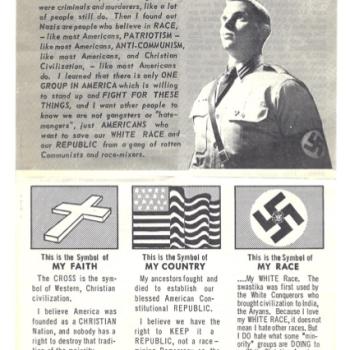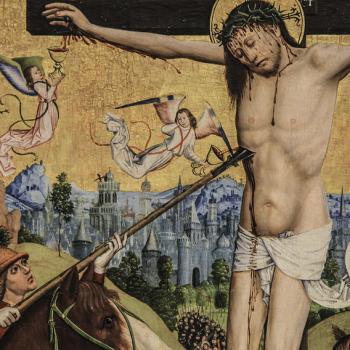 Transfiguration Sunday, March 6, 2011
Transfiguration Sunday, March 6, 2011
Matthew 17:1-9; Exodus 34:29-35
Our text for this morning is the story of Jesus' Transfiguration on a Mountain in Galilee. In the preceding chapter Peter has confessed his faith in Jesus as the Messiah, the Son of God (16:16) and Jesus has offered some sober teaching about the cost of following him. Then he goes up on a Mountain with three of his disciples Peter, James and John. Before their eyes, Jesus' clothes and garment shine like the sun. He experiences the presence of Moses and Elijah, two peerless prophets who had shaped the Hebrews' view of what Messiah would be like when he came. As he has just predicted his own suffering and death (Mt. 17: 21-23), now God previews his post-resurrection glory. Peter begins babbling about setting up permanent dwellings for the heavenly visitors, to prolong the glorious experience. As at Jesus' baptism in Matthew 3:17, the disciples now hear a voice from heaven saying "This is my Son, the Beloved; with him I am well pleased; listen to him!" Then it is time to come down the mountain and heal and teach and suffer.
We love to identify with the main characters of stories. In the novel waiting for you on your nightstand, in the movie you saw this weekend, you identified with a character, which one? We do this identifying subconsciously, but this is how it works. We pick out a character and say two things to him or her: 1) "You have some quality that I also have. You are like me in some way. " 2) "You have some quality I lack. Show me how to be like you."
Identifying with the protagonist is the fun of stories. We crave stories because we need them.Their characters help us figure out who we are and where we are going.
If there is no one in a story you can identify with, why bother? One time years ago my husband Murry and I went to a play. I can't even remember what it was called. He sat for the first half thinking "I can't identify with any of these characters -- they're spoiled, selfish, unsympathetic. But I have to sit this out, because Alyce is probably enjoying this." I sat there thinking: "I can't identify with any of these characters. But I have to sit this out, because Murry is probably really enjoying this." At intermission we discovered our misinterpretation of the other and left. Now maybe we should have seen spoiled, selfish, unsympathetic qualities in ourselves as we watched the characters on stage. But who wants to do that? If there's nobody to identify with, nobody to help us figure out who we are and where we are going, we turn off the Kindle, slam the book shut, walk out at intermission.
The Transfiguration is a story with six characters, but no character we can fully or clearly identify with. The dazzling Jesus is the Son of God, and we wouldn't want to be presumptuous and think we could ever be all that he is. Moses spoke to God face to face, and Elijah, instead of being buried in the dirt, was taken up to heaven in a chariot of fire drawn by horses of fire. The disciples, busy being dazzled and babbling, are, frankly, too human for my taste. I don't want to be like them.
But don't walk out on the Transfiguration at the intermission. Circle the scene with me. We'll find some way to identify with one of them! Let's start with Jesus. Of course, we can't presume to fully identify with Jesus, the Messiah, the Son of God. But there is something we have in common with Jesus: our humanity. As a human being, I suspect that Jesus was probably very tired at this point. That's usually when he tried to get away for a prayer break, to get a mountaintop perspective. As a human being, perhaps he was wondering how effective his ministry had been to date. From the mountaintop perhaps he could see a crowd gathering, asking one another, "Where did that miracle worker go with his loaves and fishes. We are hungry again!" Perhaps he could see crowds gathering, asking themselves, "Where did that healer go? We still have sickness!" Perhaps he could see the Pharisees clustered together, plotting against him. Perhaps he could see the rest of the disciples, milling about in confusion. Perhaps he wondered, "Do they really understand the cost of following me? Will they follow me as I head for Jerusalem?"
If you know what it is like to be tired, to have people seeking you out for what you can do for them, and other people criticizing you and working against you, if you have ever been filled with dread at what lies ahead, you have a little something in common with Jesus. If you know what it's like to feel those things as a direct result of serving God, then you have even more in common with Jesus.
He had come up here to be alone, but once on the mountain, here comes company -- Moses and Elijah! Jesus certainly identified with these two. When he thought about the story of God's dealing with the Hebrew people, it was these two he saw as shaping him and his ministry. The Hebrews themselves believed that any new Messiah that came would have to be in the mold of these two. Moses, the greatest prophet Israel had ever known, who set the standard for any Messiah who would come in the future; Moses, who had led the people in an Exodus, a departure from Egypt across the Red Sea to the wilderness; Moses, who had seen God face to face on Mt. Sinai, the Mount of Revelation, and whose face had shone.





